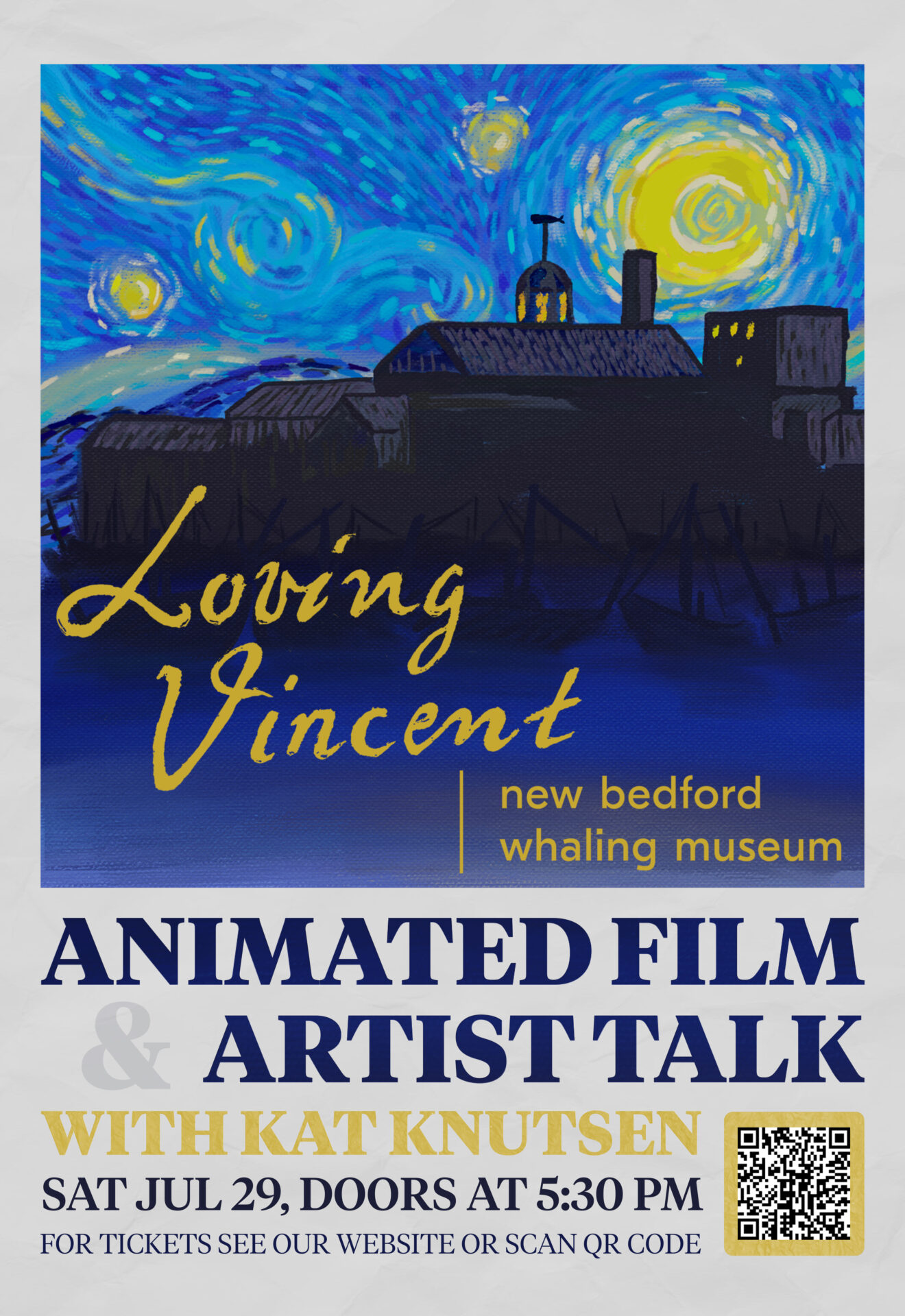
Loving Vincent: Animated Film & Artist Talk
Saturday, July 29 | Doors at 5:30pm, Film at 6:00pm
On 27th July 1890 a gaunt figure stumbled down a drowsy high street at twilight in the small French country town of Auvers. The man was carrying nothing; his hands clasped to a fresh bullet wound leaking blood from his belly. This was Vincent van Gogh, then a little known artist; now the most famous artist in the world.
Two days later – on July 29 – Vincent van Gogh died in the arms of his brother, Theo, at Auberge Ravoux in France. His tragic death has long been known, what has remained a mystery is how and why he came to be shot. Loving Vincent tells that story.
Loving Vincent (Polish: Twój Vincent) – released in 2017 – is an experimental adult animated biographical drama film. It is the first fully painted animated feature film, written and directed by Dorota Kobiela and Hugh Welchman. The filmmakers chose classically trained painters over traditional animators because, as Welchman said later, he wanted to avoid artists with "personalized styles" and employ people who were “very pure oil painters" instead.
A total of 125 painters from over 20 countries travelled to Poland to work on the project following selection from around 5,000 applicants. One of the 125 artists selected was New Bedford’s very own, Kat Knutsen. Knutsen will discuss her process and experience, after the film screening.
Creation of the film storyboard was informed by Van Gogh's paintings, sometimes with only minor alterations to the latter, but on occasions more complex transformations involving changes to the weather or time of day were carried out. Since artists typically painted over frames once they had been photographed, of the 65,000 produced during the course of the project only 1,000 survived.
The film uses a form of rotoscoping. Production for the film began with a live-action cast filming against a green screen. After filming, editors composited Van Gogh paintings into scene backgrounds, and finally cut the film together as usual. However, once the actual film was complete, they shot each individual frame onto a blank canvas, and artists painted over each image.
In all the project took 6 years to complete, and in describing the laborious process involved Welchman noted that the film's creators had "definitely without a doubt invented the slowest form of filmmaking ever devised in 120 years."

